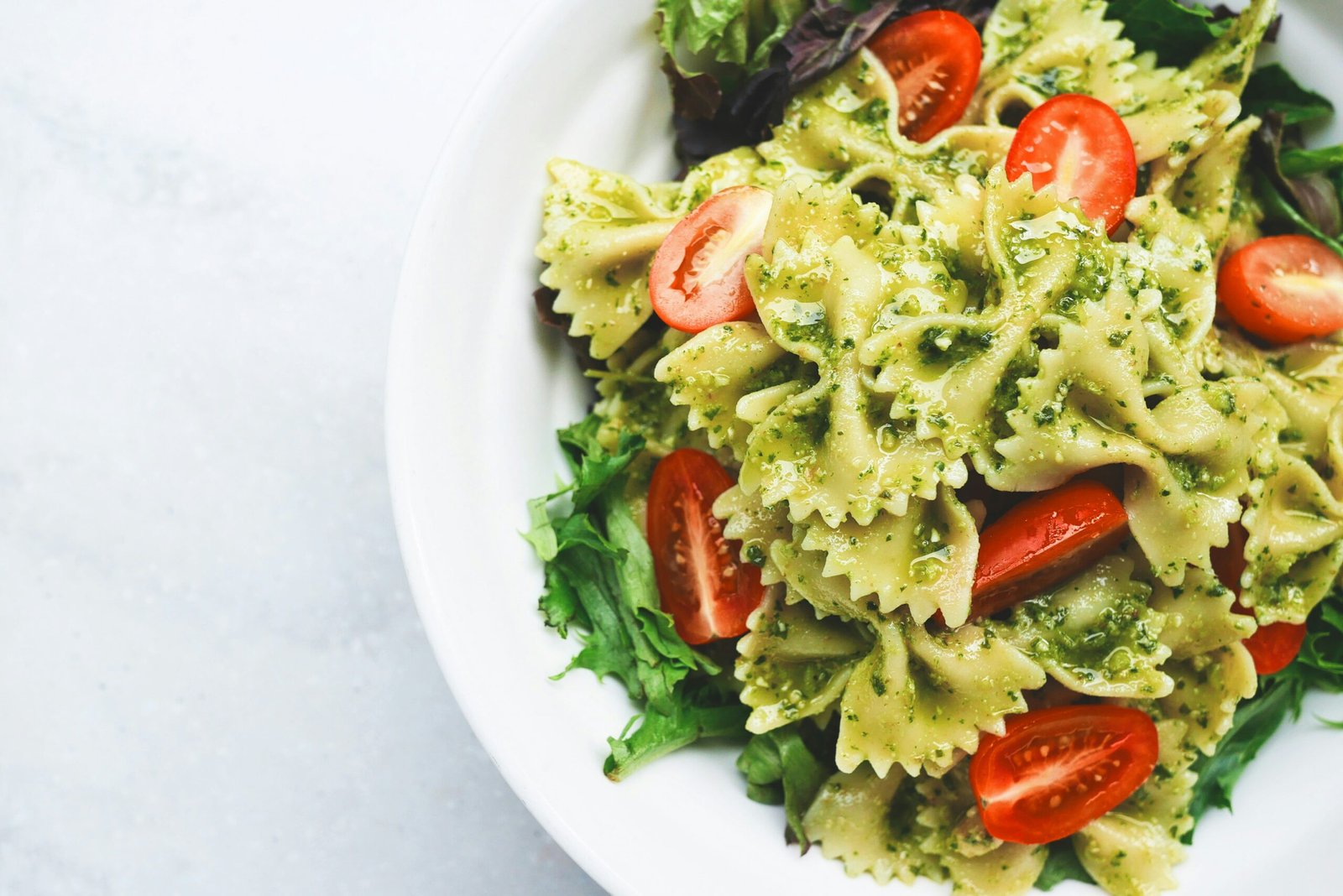Italy’s culinary heritage is a vibrant tapestry woven with iconic dishes that have transcended borders to become beloved worldwide. Among these, Pizza Margherita and Lasagna stand out as quintessential representations of Italian cuisine, each with a storied history and a rich cultural significance.
Pizza Margherita
Originating from the heart of Naples, Pizza Margherita is a celebration of simplicity and tradition. Legend has it that this classic pizza was created in 1889 to honor Queen Margherita of Savoy. The pizza’s color palette—red tomatoes, white mozzarella, and green basil—mirrors the Italian flag, making it a patriotic emblem as much as a culinary delight. The key to an authentic Pizza Margherita lies in its ingredients: San Marzano tomatoes, fresh buffalo mozzarella, and aromatic basil, all drizzled with extra virgin olive oil. The thin, crisp crust is traditionally baked in a wood-fired oven, imparting a distinct smoky flavor that is integral to its character.
For those attempting to recreate this Neapolitan masterpiece at home, it’s crucial to prioritize quality over quantity. Opt for fresh, high-quality ingredients and a simple dough made from flour, water, salt, and yeast. A hot oven, preferably with a pizza stone, will help achieve the desired crispiness. Variations such as adding garlic, oregano, or a sprinkle of Parmesan can add a personalized touch while staying true to the original essence.
Lasagna
Transitioning from the simplicity of pizza to the hearty, layered complexity of Lasagna, we delve into another beloved Italian dish. Lasagna is a comfort food staple characterized by its alternating layers of pasta, rich meat sauce, creamy béchamel, and melted cheese. Its origins date back to ancient Rome, but the version we know today has been perfected over centuries, with regional variations adding to its diversity.
The traditional meat sauce, or ragù, is slow-cooked to develop deep, robust flavors. Combining ground beef, pork, tomatoes, onions, carrots, and celery, this sauce forms the backbone of the dish. The béchamel sauce, made from butter, flour, and milk, adds a luscious creaminess that complements the meat. Fresh lasagna sheets, often homemade, provide the perfect texture to absorb the flavors, while a generous topping of cheese, typically mozzarella and Parmesan, ensures a golden, bubbly finish.
Cooking tips for a perfect Lasagna include allowing the dish to rest after baking, which helps the layers set and makes for easier slicing. Variations can include vegetarian options with spinach and ricotta or even seafood versions with shrimp and crab. Regardless of the ingredients, the essence of Lasagna remains a harmonious blend of textures and flavors that epitomize Italian home cooking.
Japan: The Art of Sushi and the Comfort of Ramen
Sushi, a culinary art form that dates back to the Edo period in Japan, embodies the essence of simplicity and precision. The foundation of sushi lies in vinegared rice, harmoniously paired with fresh ingredients such as raw fish and vegetables. There are several types of sushi, each presenting a unique experience. Nigiri, for instance, is a hand-pressed mound of rice topped with a slice of fish or seafood. Maki involves rolling vinegared rice and fillings like fish or vegetables in seaweed, then slicing it into bite-sized pieces. Sashimi, on the other hand, consists solely of thinly sliced raw fish or seafood, served without rice, allowing the delicate flavors to shine through.
Transitioning to ramen, this hearty noodle soup has evolved into a beloved comfort food, both in Japan and globally. The diversity of ramen lies primarily in its broth. Shoyu ramen features a soy sauce-based broth, offering a savory and slightly tangy profile. Miso ramen, with its fermented soybean paste base, provides a rich and complex flavor. Tonkotsu ramen, distinguished by its creamy, pork-bone broth, is known for its depth and umami. The noodles themselves, typically made from wheat, are integral to the dish, varying in thickness and texture to complement the broth.
The toppings for ramen are as varied as the broths, each contributing to the dish’s uniqueness. Common additions include slices of chashu (braised pork), soft-boiled eggs, green onions, nori (seaweed), and bamboo shoots. Each bowl of ramen is a harmonious blend of flavors and textures, designed to provide comfort and satisfaction.
Both sushi and ramen have transcended their origins, becoming global ambassadors of Japanese cuisine. The techniques involved in making these dishes at home can be intricate, yet rewarding. Mastering the art of perfectly seasoned rice for sushi or crafting a rich, flavorful broth for ramen can elevate one’s culinary skills while offering a deeper appreciation for these beloved dishes.
Mexico: Exploring the Flavors of Tacos al Pastor and Mole Poblano
Mexican cuisine is renowned for its rich flavors and vibrant ingredients, and two dishes that epitomize this are Tacos al Pastor and Mole Poblano. Tacos al Pastor, a beloved street food, has its origins steeped in the culinary traditions brought by Lebanese immigrants to Mexico. The dish features marinated pork, which is cooked on a vertical spit, much like shawarma. The pork is typically marinated in a mixture of dried chilies, spices, and pineapple juice, creating a savory-sweet flavor profile.
The cooking process of Tacos al Pastor is a spectacle in itself. The pork is stacked on the spit and slowly roasted, allowing the flavors to meld and the meat to become tender and juicy. Once cooked, the pork is thinly sliced and served on small corn tortillas, topped traditionally with fresh pineapple, onions, and cilantro. These toppings add a burst of freshness and a hint of sweetness, balancing the savory meat perfectly.
Transitioning to another iconic Mexican dish, Mole Poblano, we enter a realm of complex and rich flavors. This traditional sauce is a blend of chocolate, various types of chili peppers, and an array of spices, including cinnamon, cloves, and cumin. The result is a deep, velvety sauce that is both spicy and sweet. Mole Poblano is most commonly served over poultry, with turkey being a traditional choice, though chicken is often used in modern preparations.
The preparation of Mole Poblano is a labor-intensive process that involves toasting the ingredients, blending them into a smooth paste, and simmering for hours to achieve the desired depth of flavor. The dish is not only a culinary delight but also holds cultural significance, often being prepared for special occasions and celebrations.
Both Tacos al Pastor and Mole Poblano showcase the depth and diversity of Mexican cuisine, offering a taste of the country’s rich culinary heritage. These dishes are a testament to the intricate flavors and traditional techniques that continue to make Mexican food celebrated worldwide.
India
India’s culinary landscape is as diverse as its culture, with a rich tapestry of flavors and techniques. Butter Chicken, also known as Murgh Makhani, is a quintessential North Indian dish that melds tender chicken pieces with a creamy tomato-based sauce, flavored with a blend of spices including garam masala, cumin, and coriander. This dish, often enjoyed with naan or rice, epitomizes the richness of Indian cuisine.
Biryani, another iconic Indian dish, is a fragrant rice preparation that combines basmati rice, meat (such as chicken, mutton, or fish), and a medley of spices like saffron, cardamom, and cloves. It is often garnished with caramelized onions, boiled eggs, and fresh coriander. Biryani’s origins trace back to the Mughal era, and its preparation varies across the country, reflecting regional tastes and ingredients.
France
France’s culinary heritage is revered worldwide, with dishes like Coq au Vin and Ratatouille standing out. Coq au Vin, a traditional French stew, involves braising chicken with red wine, mushrooms, lardons, and onions. This dish is a testament to the classic French technique of slow-cooking, which enhances the depth of flavors.
Ratatouille, a vegetable medley from Provence, showcases the simplicity and elegance of French cuisine. Made with zucchini, eggplant, bell peppers, tomatoes, and seasoned with herbs like thyme and rosemary, Ratatouille is both rustic and refined, often served as a main or side dish.
Thailand
Thailand is famed for its vibrant and aromatic dishes, with Pad Thai and Tom Yum Goong being prime examples. Pad Thai, a stir-fried noodle dish, combines rice noodles with shrimp or chicken, tofu, eggs, and flavored with tamarind paste, fish sauce, and palm sugar. It is garnished with peanuts, bean sprouts, and lime wedges, offering a perfect balance of sweet, sour, and savory.
Tom Yum Goong, a hot and sour soup, features shrimp, mushrooms, lemongrass, kaffir lime leaves, galangal, and chili. This soup is celebrated for its complex flavors and is often enjoyed as a starter or a main dish.
China
China’s culinary tradition is rich and varied, with Peking Duck and Kung Pao Chicken being standout dishes. Peking Duck, a renowned Beijing specialty, involves roasting duck until the skin is crisp, then serving it with thin pancakes, hoisin sauce, and sliced scallions. The preparation is intricate, reflecting the dish’s imperial roots.
Kung Pao Chicken, a spicy stir-fry, combines chicken, peanuts, and vegetables in a flavorful sauce made from soy sauce, vinegar, and Sichuan peppercorns. This dish is loved for its bold flavors and satisfying crunch.
Greece
Greek cuisine is known for its hearty and flavorful dishes like Moussaka and Souvlaki. Moussaka, a baked casserole, layers eggplant, minced meat, and béchamel sauce, resulting in a comforting and rich dish often compared to lasagna.
Souvlaki, skewered and grilled meat, is typically made with pork or chicken, marinated in olive oil, lemon juice, and oregano. It is usually served with pita bread, tomatoes, onions, and tzatziki sauce, making for a flavorful and satisfying meal.
Spain
Spain’s culinary offerings are diverse and deeply rooted in regional traditions. Paella, a rice dish from Valencia, combines saffron-infused rice with seafood, chicken, rabbit, and vegetables. Its preparation requires a wide, shallow pan, allowing the rice to form a crispy layer known as socarrat.
Gazpacho, a cold tomato-based soup, is a summer favorite in Andalusia. Made with ripe tomatoes, cucumbers, bell peppers, onions, garlic, and olive oil, Gazpacho is refreshing and packed with garden-fresh flavors.
Brazil
Brazilian cuisine is hearty and savory, with Feijoada and Picanha being iconic examples. Feijoada, a black bean stew with pork, is often considered Brazil’s national dish. It is traditionally served with rice, collard greens, and orange slices, offering a rich and satisfying meal.
Picanha, a prized cut of beef, is typically grilled and seasoned simply with coarse salt. Known for its tenderness and flavor, Picanha is a staple at Brazilian barbecues, or churrascos, and is often accompanied by farofa (toasted cassava flour) and vinaigrette.





